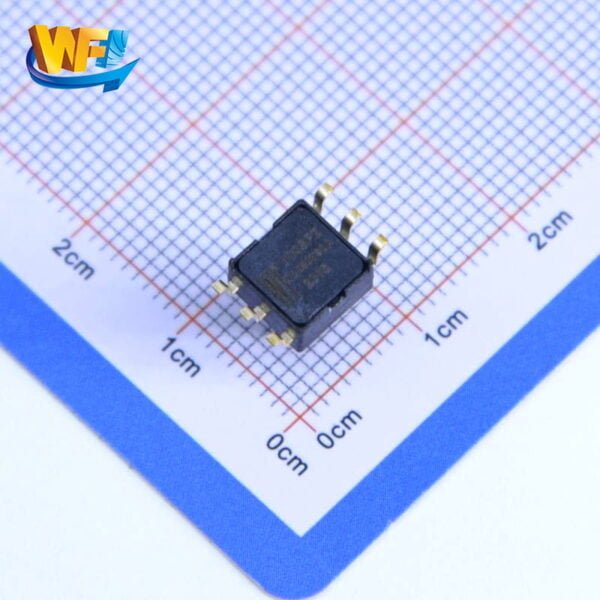Con il continuo progresso della scienza e della tecnologia, La tecnologia MEMS è sempre più utilizzata in diversi ambiti, soprattutto nel campo dei sensori. Il sensore di pressione è uno dei migliori campi di applicazione della tecnologia MEMS. Presenta i vantaggi dell'alta precisione, alta sensibilità, piccola dimensione, basso consumo energetico, ecc., ed è ampiamente utilizzato nell'industria, medico, automobile, aviazione e altri campi.
Quindi diamo un'occhiata alla progettazione e alla produzione di sensori di pressione basati sulla tecnologia MEMS.
1. Struttura e principio del sensore di pressione
I sensori di pressione generalmente consistono in elementi di rilevamento, Circuiti di elaborazione del segnale, circuiti di uscita e involucri. Tra loro, L'elemento di rilevamento è il componente centrale del sensore di pressione, che può convertire la quantità fisica ricevuta in un segnale elettrico. Secondo diversi principi di lavoro, Gli elementi di rilevamento possono essere divisi in sensori di pressione di deformazione resistiva, Sensori di pressione capacitivi e sensori di pressione micro-meccanica.
Il sensore di pressione micromeccanica è prodotto utilizzando la tecnologia MEMS. La sua struttura principale include un diaframma, una cavità, uno strato conduttivo, uno strato fisso, ecc. Quando la pressione agisce sul diaframma del sensore, Si verificherà una leggera deformazione a flessione. Questa deformazione causerà una leggera variazione della distanza tra lo strato conduttivo e lo strato fisso sul diaframma, cambiando così il valore della capacità, e quindi calcolare il risultato. La quantità di pressione ricevuta.
2. Caratteristiche dei sensori di pressione MEMS
A causa dell'uso della tecnologia MEMS, Sensori di pressione MEMS avere varie caratteristiche, come dimensioni ridotte, peso leggero, alta precisione, risposta rapida, alta affidabilità, e basso consumo di energia. La sua sensibilità può raggiungere 1PA, e l'errore è inferiore a 0.2%. Allo stesso tempo, I sensori di pressione MEMS hanno anche caratteristiche come la resistenza al terremoto e l'anti-interferenza, e sono adatti per applicazioni in ambienti complessi.
3. Processo di produzione dei sensori di pressione MEMS
Il processo di produzione dei sensori di pressione MEMS include principalmente l'elaborazione dei wafer, Elaborazione della cavità, Elaborazione conduttiva del livello, imballaggio e altri collegamenti.
L'elaborazione del wafer è il primo passo nella produzione di sensori MEMS, e il suo funzionamento deve essere eseguito in un purificato, ambiente senza polvere. La tecnologia di produzione Wafer MEMS si basa sul processo di produzione dei substrati di circuito integrato, Utilizzo dei processi fotoresist, processi di maschera, Processi di evaporazione e altri metodi per integrare gli elementi di rilevamento, circuiti di controllo e pin di collegamento sullo stesso wafer.
L'elaborazione della cavità è il processo di taglio, Incisione, e legando i wafer per formare la struttura della cavità del sensore. Questo processo richiede tecnologie di mastering come il taglio della lama, Incisione laser, e incisione del raggio di ioni.
L'elaborazione conduttiva dello strato è uno dei processi comuni in cui metalli come rame e alluminio vengono trasformati in film sottili ed elaborate utilizzando la tecnologia della fotolitografia per formare componenti come varisti o condensatori. Allo stesso tempo, I metodi di fascio di elettroni o micro-raggi sono anche utilizzati per produrre strutture di micro conduttore.
L'imballaggio è garantire la sigillatura dei componenti MEMS in condizioni di utilizzo, ed è anche uno degli aspetti più difficili. Sensori MEMS sono generalmente confezionati usando l'imballaggio a livello di wafer (CSP), imballaggio in plastica e altri processi.
4. Sviluppo futuro dei sensori di pressione MEMS
Con il continuo avanzamento della tecnologia e l'ampia applicazione di sensori MEMS in vari campi, Si prevede che i futuri sensori di pressione MEMS avranno le seguenti caratteristiche:
1. Struttura diversificata. Attualmente, La maggior parte dei sensori di pressione MEMS si basa su componenti sensibili alla pressione con una singola struttura. I sensori di pressione futuri richiedono progetti multi-stage e multi-struttura più flessibili.
2. Precisione migliorata. I sensori di pressione MEMS hanno un'eccellente precisione, Ma in futuro sviluppo, La loro precisione e rapporto segnale-rumore continueranno a essere migliorati per fornire capacità di misurazione più accurate per varie applicazioni.
3. Riduzione del consumo di energia. Sensori di pressione MEMS consumare elettricità, e lo sviluppo futuro richiede una migliore riduzione del loro consumo energetico per ottenere un minor consumo di energia.
Riassumere:
Insomma, I sensori di pressione basati sulla tecnologia MEMS hanno ampie prospettive di applicazioni, Alti contenuti tecnici e buone prospettive di mercato. Con il continuo miglioramento della tecnologia di produzione e l'espansione dell'ambito dell'applicazione, Si ritiene che i sensori di pressione MEMS forniranno più completi e soluzioni di misurazione affidabili In vari campi.



